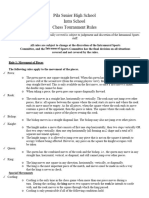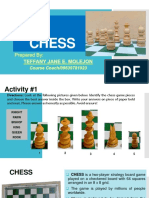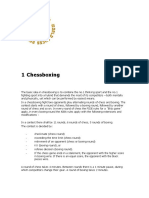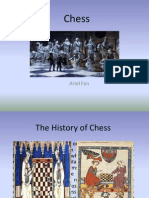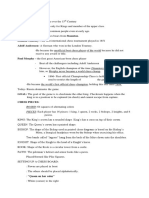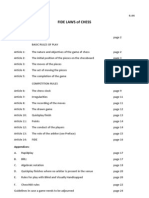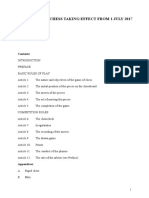0% found this document useful (0 votes)
110 views4 pagesChess Tournament Guide for Beginners
The document provides basic rules for playing chess including:
1) It describes the chessboard layout with 64 squares alternating in color and 8 ranks and files. It also lists the standard pieces for each side.
2) It explains how each piece moves - the king can move one square in any direction except into check, pawns move straight forward one square except their first move which can be two squares, etc.
3) It defines checks, checkmates, and different ways a game can end such as checkmate, resignation, stalemate, or certain endgame positions with insufficient material to checkmate.
Uploaded by
Saba ShahCopyright
© Attribution Non-Commercial (BY-NC)
We take content rights seriously. If you suspect this is your content, claim it here.
Available Formats
Download as DOCX, PDF, TXT or read online on Scribd
0% found this document useful (0 votes)
110 views4 pagesChess Tournament Guide for Beginners
The document provides basic rules for playing chess including:
1) It describes the chessboard layout with 64 squares alternating in color and 8 ranks and files. It also lists the standard pieces for each side.
2) It explains how each piece moves - the king can move one square in any direction except into check, pawns move straight forward one square except their first move which can be two squares, etc.
3) It defines checks, checkmates, and different ways a game can end such as checkmate, resignation, stalemate, or certain endgame positions with insufficient material to checkmate.
Uploaded by
Saba ShahCopyright
© Attribution Non-Commercial (BY-NC)
We take content rights seriously. If you suspect this is your content, claim it here.
Available Formats
Download as DOCX, PDF, TXT or read online on Scribd
/ 4










